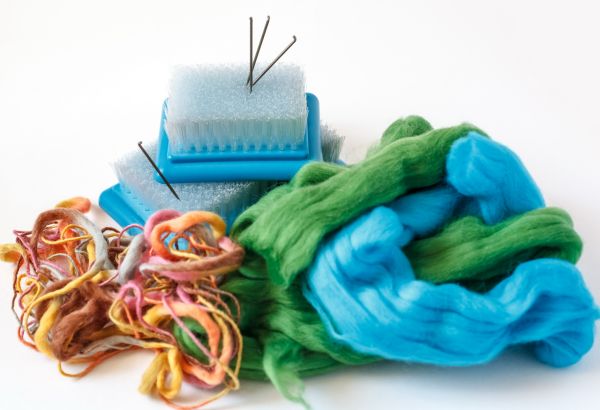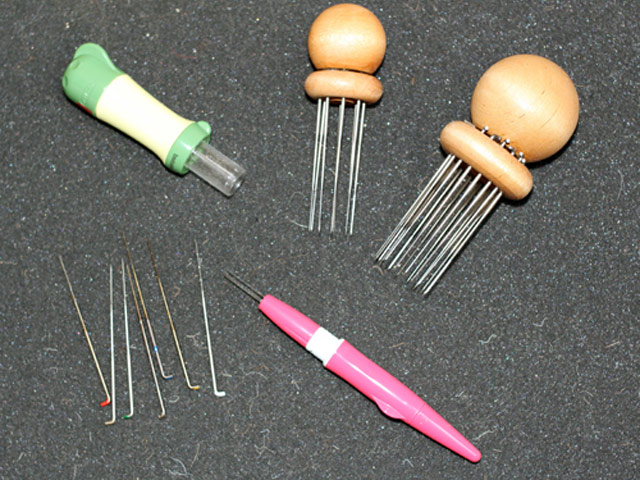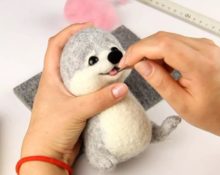 Natural wool is highly valued for its unique spinning qualities, which people were able to appreciate in ancient times. Many years ago, when the felting technique was first used, people tried to use it to process the remains of wild animal hair. For many peoples (especially nomadic ones), felt, formed in the process of compacting wool, was considered a cult material, since it was the only textile option.
Natural wool is highly valued for its unique spinning qualities, which people were able to appreciate in ancient times. Many years ago, when the felting technique was first used, people tried to use it to process the remains of wild animal hair. For many peoples (especially nomadic ones), felt, formed in the process of compacting wool, was considered a cult material, since it was the only textile option.
Steppe nomads used felt to make pillows, mattresses, various covers, carpets, burkas, hats and many other products. Let us briefly recall the history of wool felting.
First mention of felting in Noah's Ark

Felting wool from Merino sheep
Felting is considered the most ancient needlework technique. This is an ancient way of creating products from unspun wool fibers.
The appearance of the first products of this type, according to archaeologists, dates back to 8000 years ago.
According to one of the ancient legends, the very first felted carpet appeared on Noah's Ark. The sheep transported on it were kept in extremely limited space.
The animals constantly rubbed against each other, tufts of fur fell on the floor, became wet and gradually compacted under the hooves.
Subsequently, when the sheep were taken out of the ark, a thick cloth remained on the floor in the place where they were kept.
Felting wool in different countries
Traditional felting of wool is one of the varieties of folk craft of many nomadic peoples of Mongolia and Tibet, Central Asia, India and Turkey. Since ancient times, this material has been highly valued by many nations as a basic necessity of life. Currently, felt is widespread in Europe.

Modern felt products
Many modern needlewomen create fashionable clothes, shoes, bags, toys, paintings and various jewelry from it.
Felt traditions
Wool felting, like any other art, has certain traditions that were formed under the influence of the identity of each nation. Some traditions were lost for various reasons, but many have survived to this day.

Felting wool: Altai Mountains
Iranian technology
Ornament is considered a characteristic feature of this tradition. According to the Iranian technique, the chosen motif is first laid out with wool on a mat, which is then rolled. After this, the felting process begins.
 Currently, modern Turkmens are recognized as the bearers of this tradition. Even today, these masters continue to make felt mats in the same way as it was done in ancient times.The main pattern of Turkmen felt is a stylized ram's horn. The most used colors include white, red and black.
Currently, modern Turkmens are recognized as the bearers of this tradition. Even today, these masters continue to make felt mats in the same way as it was done in ancient times.The main pattern of Turkmen felt is a stylized ram's horn. The most used colors include white, red and black.

Wet felting Iranian technique
Pazyrykskaya
Archaeologists found the most ancient felt products in burials of the Altai Mountains dating back to the 4th-5th centuries BC. e. The Pazyryk culture, attributed to the “Scythian circle,” was discovered in this place. Well-preserved elements of horse equipment, a variety of soft utensils and clothing were found in the burials.

Pazyryk felting technique
Currently, preserved felt products belonging to this culture can be seen in the Hermitage.
Reference! The most famous product made using this technique is a curtain of impressive size (approximately 30 m²).
Pazyryk felt products are distinguished by skillful jewelry appliqué in amazingly bright colors.
Sunskaya
The first examples of products belonging to this tradition were discovered in Inner Mongolia. Such products were predominantly one-color.

Felting wool in Buryatia
Such products were decorated with fine stitching from tendon threads. Currently, this tradition exists in Buryatia. Traditional mystical quilting patterns are widely popular there.

Wet felting Sung technique in Mongolia
Slavic
The production of felts as such was not typical for the Slavs, but they perfectly mastered the craft of making so-called semi-felts - woven and felted after materials, the classic example of which is cloth (it was made from wool of natural colors).
 Real felt, as many researchers believe, appeared on the territory of Russia during the period of the Mongol-Tatar yoke.
Real felt, as many researchers believe, appeared on the territory of Russia during the period of the Mongol-Tatar yoke.
European
In European countries, it was customary to felt felt by rolling it between rollers. In addition, another method was used. The wool was compacted in large funnel-like containers under the influence of a swirling water flow.

Needle-punched method of industrial felt production
Over time, the production of thin felt (felt) acquired an industrial scale. In the 20th century, a needle-punched method for the industrial production of felt appeared, which made it possible to felt even fiber of artificial origin.
Two types of felting
Dry method
There are two main methods of felting - dry and wet. The dry method was invented relatively recently. This felting is carried out using special needles equipped with inclined notches.

Needles for dry felting - felting
These needles pierce the wool many times. The notches catch the hairs, intertwining and compacting them together.
 The result is a homogeneous and dense material.
The result is a homogeneous and dense material.
 This method is good for making three-dimensional products - original dolls, toys and jewelry.
This method is good for making three-dimensional products - original dolls, toys and jewelry.
 Wet method
Wet method
Wet felting is done using a soap solution, which reduces friction between the hairs. First, the wool product is laid out in the required manner, then it needs to be moistened with the prepared solution and the felting process can begin by rubbing and crumpling the material.
Reference! Hot water helps the fibers lengthen and speeds up the process of joining them together.

Wet felting
After completing the procedure, the resulting product must be rinsed in clean water and dried well.This method is used mainly for the manufacture of flat products, such as clothing, canvases and panels.
Modern traditions of using felt
In the modern world, felting has long ceased to be a simple craft and turned into an art. Recently there has been a sharp increase in interest in felt.
 Specialists in their field create not only toys from this material, but also expensive designer outfits and decorations for them. Many of the craftsmen work using the “hot” technique, but the “cold” method of felting has also become quite widespread.
Specialists in their field create not only toys from this material, but also expensive designer outfits and decorations for them. Many of the craftsmen work using the “hot” technique, but the “cold” method of felting has also become quite widespread.
 Felting wool is an ancient art that has enjoyed wide popularity among modern needlewomen in recent decades. Felting techniques are very diverse and allow you to create many original products. This is a fascinating hobby that brings pleasure to people who have mastered its simple principles.
Felting wool is an ancient art that has enjoyed wide popularity among modern needlewomen in recent decades. Felting techniques are very diverse and allow you to create many original products. This is a fascinating hobby that brings pleasure to people who have mastered its simple principles.


 0
0





